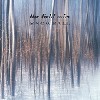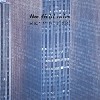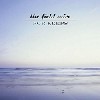The Field Mice were thecanonical Sarah band, expanding the label's sound beyond the hermetictag of twee pop, which it wore and still wears as a badge. While theField Mice certainly hovered in the regions of twee, they also forgedand hybridized other sounds: dance, electronic, indie pop, Brit pop,folk, and shoegazer. Despite a histrionic dissolution of the band, someof the former Field Mice have continued recording like-minded musicunder monikers such as Northern Picture Library and Trembling BlueStars. In 1998, Shinkansen Records, Matt Haynes' follow-up label toSarah Records, released Where'd You Learn to Kiss That Way,a double CD collection of Field Mice songs which was more of a greatesthits compilation than an exhaustive discography. Since that collectionitself has been out of print for a while now, LTM has kindly stepped inand released a full retrospective arranged chronologically on threeseparate releases.
Snowball + Singles Named after the 10" mini-LP which The Field Mice released on SarahRecords in 1989, this includes the first two Sarah 7" singles, a 7" onThe Caff Corporation, and a compilation track. What struck me first wasthat the cover art on this CD (and the others) was largely out of touchwith what I knew of the band's original artwork for their records.Field Mice albums tended to have very colorful and geometric coversdesigns which caught the eye immediately. On the LTM reissues there aresome wispy, Photoshopped landscapes which look like the covers on musiconce found at The Nature Store. The font for the band name and thetitle have a horribly tasteless drop shadow which looks like somethinga fifth-grader created on MacPaint in 1987 for a Mother's Day card. Ialmost expected to hear the sound of rustling leaves for 70 minuteswith a bonus track of lapping ocean waves. Reassuringly, the music hereis unsullied and as I remember the band. The two Sarah seven-inchessupply the best moments on this disc. Songs like "Emma's House" and"When Morning Comes to Town" are such delicate indie pop moments thattheir fragility becomes not so much a liability as it is a strength.The latter song opens with such a softly-strummed guitar that as aresult your ears are piqued by the challenge to hear the music. Adoting bass line soon picks up the louder decibels and colors thesoftness elsewhere. Other instruments fall in eventually and even theguitar tempo picks up and the song becomes inexplicably dancy, albeitin the most soft-spoken way possible. "Emma's House" is anthemic in away that indie pop rarely can be. A drum machine provides a roboticbeat wherein shimmery guitars climb up and down, settling down only formere seconds at a time. The song is the eponymous cut from The FieldMice's first single when the band was but two people: Bobby Wratten andMichael Hiscock. In fact, most of the songs on Snowball were produced at a time when the band was still a two-piece. I never much cared for the Snowball10" and still don't, but "This Love is Not Wrong" is nothing if notpure twee beauty. "Letting Go" interestingly conjures sounds of TheCure with its minor-chord ramblings, veiled whispers, and glisteningkeyboards. It sounds eerily similar to "All Eternal Things," a songfrom the most recent Trembling Blue Stars album. Some things don'tchange, I suppose. "That's All This Is," is from the Airspace!compilation and by its own virtues is the best validation for LTM'sreissue. Resonating like a percussed lullaby, it's the type of song forwhich a Field Mice lover desperately pines.
Named after the 10" mini-LP which The Field Mice released on SarahRecords in 1989, this includes the first two Sarah 7" singles, a 7" onThe Caff Corporation, and a compilation track. What struck me first wasthat the cover art on this CD (and the others) was largely out of touchwith what I knew of the band's original artwork for their records.Field Mice albums tended to have very colorful and geometric coversdesigns which caught the eye immediately. On the LTM reissues there aresome wispy, Photoshopped landscapes which look like the covers on musiconce found at The Nature Store. The font for the band name and thetitle have a horribly tasteless drop shadow which looks like somethinga fifth-grader created on MacPaint in 1987 for a Mother's Day card. Ialmost expected to hear the sound of rustling leaves for 70 minuteswith a bonus track of lapping ocean waves. Reassuringly, the music hereis unsullied and as I remember the band. The two Sarah seven-inchessupply the best moments on this disc. Songs like "Emma's House" and"When Morning Comes to Town" are such delicate indie pop moments thattheir fragility becomes not so much a liability as it is a strength.The latter song opens with such a softly-strummed guitar that as aresult your ears are piqued by the challenge to hear the music. Adoting bass line soon picks up the louder decibels and colors thesoftness elsewhere. Other instruments fall in eventually and even theguitar tempo picks up and the song becomes inexplicably dancy, albeitin the most soft-spoken way possible. "Emma's House" is anthemic in away that indie pop rarely can be. A drum machine provides a roboticbeat wherein shimmery guitars climb up and down, settling down only formere seconds at a time. The song is the eponymous cut from The FieldMice's first single when the band was but two people: Bobby Wratten andMichael Hiscock. In fact, most of the songs on Snowball were produced at a time when the band was still a two-piece. I never much cared for the Snowball10" and still don't, but "This Love is Not Wrong" is nothing if notpure twee beauty. "Letting Go" interestingly conjures sounds of TheCure with its minor-chord ramblings, veiled whispers, and glisteningkeyboards. It sounds eerily similar to "All Eternal Things," a songfrom the most recent Trembling Blue Stars album. Some things don'tchange, I suppose. "That's All This Is," is from the Airspace!compilation and by its own virtues is the best validation for LTM'sreissue. Resonating like a percussed lullaby, it's the type of song forwhich a Field Mice lover desperately pines.
samples:
Skywriting + Singles This two-CD set is an overview of the band's middle years. At thispoint, I am starting to get a little suspicious of LTM's graphicdesigners and what their aesthetic vision was for these CD covers. Gonenow is the nature imagery and in its place there is the distressedstature of a skyscraper looking spookily like one half of NYC's TwinTowers. The image is irrepressibly hideous, not for what it evokes butsimply for its banal appearance. The music on disc 1 is my leastfavorite Field Mice material, partly because they endeavor to sound alittle too much like the Human League (hardly an imprudent move in andof itself, but executed not very well here) and partly because the bandloses some of its virtuous fragility through the over-used electronicsin the songs. The songs are taken from the Skywriting 12" and the So Said Kay10". Most people will tell you that "So Said Kay" is a song whichtypifies everything good about The Field Mice, but I submit that thesong "Holland Street" is a much better mark of the band's glory. Thehand-drummed beginning sounds nearly tribal but any primitivism is soondissipated when the guitar lusciously falls in and from there the songsimply percolates for three minutes in the best sort of instrumentalanxiety. "Holland Street" sounds like a perfected introductory song foran album. Too bad LTM didn't feel poetically licensed enough to playwith the sequencing on these reissues because it would have made onedecisive opening track. One of the more curious songs here is"Humblebee." It is a sound collage which is more perplexing thanartfully incisive. The Field Mice seem out of their element here, lostin the continental forests and far from any meadows in Surrey. Disc 2offers some salvation from the electronic experimentation of disc 1."If You Need Someone" is playful and soaring with its keyboard andguitar exchanges. Wratten's vocals are so earnest it can hurt, but theynever make you feel embarrassed the way that some earnestness does.With only its title, "Anyone Else Isn't You" explicitly announces TheField Mice's thematic vision of singularity and of purpose. Many oftheir songs focus on a significant other, whether adored or estrangedor both, firmly believing that this is the one person who can make lifemeaningful. If the band does not zealously believe in destiny, theycertainly are blinded by it occasionally. Though this theme issomething you can probably discern from just perusing the song titles,actually listening to the lyrics confirms it. The songs from disc 2come from the Autumn Store seven-inches (of which there are two) as well as some outtakes and compilation tracks. Skywriting + Singlesends on something of a sour note with the tedious ten-minute ruminationentitled "Other Galaxies" which jams and drones for about seven minutestoo long. Of the three reissues, this installment is the leastbrilliant and yet the most voluminous.
This two-CD set is an overview of the band's middle years. At thispoint, I am starting to get a little suspicious of LTM's graphicdesigners and what their aesthetic vision was for these CD covers. Gonenow is the nature imagery and in its place there is the distressedstature of a skyscraper looking spookily like one half of NYC's TwinTowers. The image is irrepressibly hideous, not for what it evokes butsimply for its banal appearance. The music on disc 1 is my leastfavorite Field Mice material, partly because they endeavor to sound alittle too much like the Human League (hardly an imprudent move in andof itself, but executed not very well here) and partly because the bandloses some of its virtuous fragility through the over-used electronicsin the songs. The songs are taken from the Skywriting 12" and the So Said Kay10". Most people will tell you that "So Said Kay" is a song whichtypifies everything good about The Field Mice, but I submit that thesong "Holland Street" is a much better mark of the band's glory. Thehand-drummed beginning sounds nearly tribal but any primitivism is soondissipated when the guitar lusciously falls in and from there the songsimply percolates for three minutes in the best sort of instrumentalanxiety. "Holland Street" sounds like a perfected introductory song foran album. Too bad LTM didn't feel poetically licensed enough to playwith the sequencing on these reissues because it would have made onedecisive opening track. One of the more curious songs here is"Humblebee." It is a sound collage which is more perplexing thanartfully incisive. The Field Mice seem out of their element here, lostin the continental forests and far from any meadows in Surrey. Disc 2offers some salvation from the electronic experimentation of disc 1."If You Need Someone" is playful and soaring with its keyboard andguitar exchanges. Wratten's vocals are so earnest it can hurt, but theynever make you feel embarrassed the way that some earnestness does.With only its title, "Anyone Else Isn't You" explicitly announces TheField Mice's thematic vision of singularity and of purpose. Many oftheir songs focus on a significant other, whether adored or estrangedor both, firmly believing that this is the one person who can make lifemeaningful. If the band does not zealously believe in destiny, theycertainly are blinded by it occasionally. Though this theme issomething you can probably discern from just perusing the song titles,actually listening to the lyrics confirms it. The songs from disc 2come from the Autumn Store seven-inches (of which there are two) as well as some outtakes and compilation tracks. Skywriting + Singlesends on something of a sour note with the tedious ten-minute ruminationentitled "Other Galaxies" which jams and drones for about seven minutestoo long. Of the three reissues, this installment is the leastbrilliant and yet the most voluminous.
samples:
For Keeps + Singles At this point, I am convinced that LTM hired a consultant from theThomas Kinkade galleries (no, they don't look like Kinkade's work butthey exhibit the same lack of taste) to design the covers. This thirdcover has a fuzzed-out ocean scene (or are they clouds?) with the sameblue/purplish hue saturating the other covers. On a good note, the dropshadows have disappeared from the fonts. Whether this was donepurposely or as an oversight is unclear, but my money is on the latter.Fortunately, the music starts out more satisfactorily with "FiveMoments" from the For Keeps LP, which was The Field Mice's only official full-length album. For Keepsstill has those moments of Human League emulation but the band was ableto dilute that with some more standard indie pop creations. "FiveMoments" starts off with some suspect effects-processed and tribalvocals (not tribal like the drums from "Holland Street," which werealmost Native American influenced. This is more of an eastern Indiansound, from the heart of Bombay or New Delhi) but soon enough glidesinto a gentle and pleasant wah-pedal melody. Annemari Davies's vocalsare featured on this song, not Wratten's. Davies also gives voice tothe most heartbreaking Field Mice song to be found anywhere: "Willow."It is a simply but infectious guitar dirge drenched in pathos andsadness. The song is elegant and easy to listen to but in between thelyrics there is writhing and pain beyond what you might expect from theband. Perhaps less soul-crushing but equally dramatic is "A Wrong Turnand Raindrops." A swollen harmonica mixes with a lethargic guitar andthe song never gets going until the chorus where the guitar gainspurpose and clarity, the vocals gain intensity and melody, and the songcomes together, only to fall apart again during the next verse, comeback once again at the next chorus. The pattern repeats for four and ahalf minutes. It is offsetting yet compelling and heavy on the emotion.To balance things out, there are moments of levity such as "An EarlierAutumn" which has a country twang and a light step. The song (alongwith "September's Not So Far Away" and "Between Hello and Goodbye") isfrom the last Sarah Records Field Mice 7" and returns the group fullcircle to something that is much closer to their initial sound:spritely, playful, and dripping with lovelorn honesty.
At this point, I am convinced that LTM hired a consultant from theThomas Kinkade galleries (no, they don't look like Kinkade's work butthey exhibit the same lack of taste) to design the covers. This thirdcover has a fuzzed-out ocean scene (or are they clouds?) with the sameblue/purplish hue saturating the other covers. On a good note, the dropshadows have disappeared from the fonts. Whether this was donepurposely or as an oversight is unclear, but my money is on the latter.Fortunately, the music starts out more satisfactorily with "FiveMoments" from the For Keeps LP, which was The Field Mice's only official full-length album. For Keepsstill has those moments of Human League emulation but the band was ableto dilute that with some more standard indie pop creations. "FiveMoments" starts off with some suspect effects-processed and tribalvocals (not tribal like the drums from "Holland Street," which werealmost Native American influenced. This is more of an eastern Indiansound, from the heart of Bombay or New Delhi) but soon enough glidesinto a gentle and pleasant wah-pedal melody. Annemari Davies's vocalsare featured on this song, not Wratten's. Davies also gives voice tothe most heartbreaking Field Mice song to be found anywhere: "Willow."It is a simply but infectious guitar dirge drenched in pathos andsadness. The song is elegant and easy to listen to but in between thelyrics there is writhing and pain beyond what you might expect from theband. Perhaps less soul-crushing but equally dramatic is "A Wrong Turnand Raindrops." A swollen harmonica mixes with a lethargic guitar andthe song never gets going until the chorus where the guitar gainspurpose and clarity, the vocals gain intensity and melody, and the songcomes together, only to fall apart again during the next verse, comeback once again at the next chorus. The pattern repeats for four and ahalf minutes. It is offsetting yet compelling and heavy on the emotion.To balance things out, there are moments of levity such as "An EarlierAutumn" which has a country twang and a light step. The song (alongwith "September's Not So Far Away" and "Between Hello and Goodbye") isfrom the last Sarah Records Field Mice 7" and returns the group fullcircle to something that is much closer to their initial sound:spritely, playful, and dripping with lovelorn honesty.
samples:
Read More

